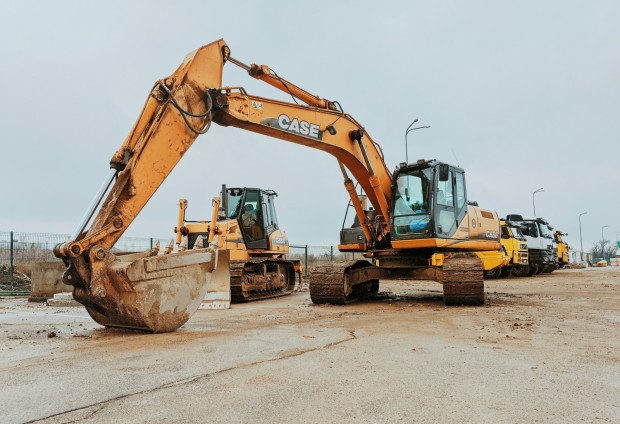Effective excavation is important in establishing a sturdy and long-lasting foundation, which serves as the foundation for the overall success of the construction project. However, due to the involvement of heavy machinery, this process poses significant safety risks.

(Photo : Unsplash/Dmitriy Zub )
1. Soil Stability and Slides
Workers in excavations are put in danger when the soil conditions are unstable because this might result in soil slides and collapses. Several factors, including soil composition, moisture level, and slope angles, can cause soil instability. Since groundwater is responsible for soil erosion, an absence of groundwater control can also be a concern. Therefore, it is essential to conduct soil tests before beginning any excavation operation to evaluate the stability of the soil effectively. Precise characteristics of the soil, including its compressibility and permeability, should be investigated through these experiments.
2. Equipment accidents
If performed differently, the heavy machinery utilized in excavation operations might provide a severe risk. Employers are responsible for offering appropriate training to equipment operators and ensuring they are conversant with the machinery used to prevent accidents. As stated, teams must keep their work areas free and adopt safety measures that comply with all Occupational Safety and Health Administration (OSHA) requirements to reduce the likelihood of accidents.
3. Cave-ins and Collapses
The possibility of cave-ins and collapses is one of the most severe dangers encountered when excavating. In a short amount of time, trenches can become unstable, resulting in the soil collapse in the surrounding area. Workers within the trench can sustain severe injuries or lose their lives as a consequence of this. Preventative measures, such as a trench box, also referred to as a trench shield, are reportedly required for workers to protect themselves against cave-ins. As mentioned, a trench box is a two-sided support system that stabilizes utility workers while digging.
Also Read: A Step-by-Step Guide to DIY Drywall Installation
4. Hitting Utility Lines
In addition to inflicting costly damage to municipal infrastructure, hitting utility wires while excavating can also result in electrocution and natural gas leaks, both of which can result in the death of workers. Before beginning your excavation, it is advisable to contact the local utility companies to avoid accidentally hitting any utility lines. Accordingly, allow the utility companies to designate their lines after contacting your local 811 service. Aside from ensuring the safety of your workforce, this will also help save your company from incurring a fine, as digging without first requesting permission is against the law in many states.
5. Falls and Falling Loads
An excavation zone is hazardous to personnel and machinery. Protect the excavation perimeter from falls by erecting a barrier and affixing cautionary signage to the fullest extent feasible. There is also the possibility that falling loads, such as excavated earth or equipment from a construction site, could fall into a trenched area and crush anyone working below. Because of this, the OSHA mandates that materials on the construction site must be stored at least two feet from the edge of an excavation. In addition, this organization also mandates that employers do not permit work to be performed beneath suspended or lifted weights.
6. Injuries due to Proximity of Workers
During excavations, laborers typically collaborate closely with one another. Under these circumstances, there is a greater possibility of sustaining injuries from accidental contact with tools or equipment.
Related Article: Do's & Don'ts During Excavation Process in Construction







